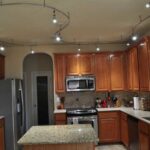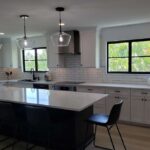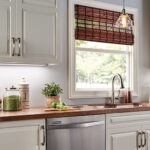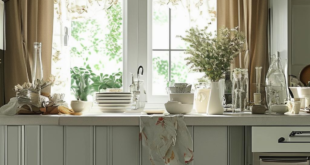The kitchen is often referred to as the heart of the home, and having the right lighting can make a world of difference in both the functionality and atmosphere of this important space. Whether you’re cooking up a storm, enjoying a family meal, or entertaining guests, proper lighting can enhance the overall aesthetic and functionality of your kitchen.
There are several key factors to consider when planning the lighting for your kitchen. The first is the type of lighting – ambient, task, and accent lighting all play different roles in creating a well-lit space. Ambient lighting provides general illumination and can come from ceiling fixtures, recessed lighting, or track lighting. Task lighting is focused on specific work areas, such as the countertop, stove, or sink, and can be provided by under-cabinet lighting, pendant lights, or track lights. Accent lighting is used to highlight certain features or create a specific mood, and can include LED strips, toe kick lighting, or decorative fixtures.
One popular trend in kitchen lighting is the use of pendant lights over islands or dining areas. These fixtures not only provide task lighting for meal prep or eating, but also serve as a decorative element that can add a touch of style to the space. Pendant lights come in a variety of shapes, sizes, and styles, so you can choose one that complements your kitchen design and personal taste.
Under-cabinet lighting is another essential element in a well-lit kitchen. This type of lighting not only adds task lighting to the countertop, but also creates a warm and inviting ambiance. LED strips are a popular choice for under-cabinet lighting, as they are energy-efficient, long-lasting, and provide a bright and even light source.
For those who want to add a touch of luxury to their kitchen, toe kick lighting is a great option. This type of lighting is installed at the base of cabinets, islands, or other fixtures, and can create a soft and subtle glow that adds a sophisticated touch to the space. Toe kick lighting can also serve as a night light, making it easier to navigate the kitchen in the dark.
In addition to these individual lighting options, it’s important to consider the overall lighting plan for your kitchen. A combination of ambient, task, and accent lighting will provide the best illumination for all areas of the kitchen, ensuring that you have the right amount of light for cooking, dining, and socializing.
In conclusion, there are many kitchen lighting ideas to choose from, each offering its own unique benefits and style. By considering the type of lighting needed for each area of your kitchen, as well as your personal preferences and design aesthetic, you can create a well-lit and inviting space that will enhance your cooking and dining experience. Whether you prefer pendant lights, under-cabinet lighting, or toe kick lighting, the key is to create a balanced lighting plan that meets your needs and enhances the overall look and feel of your kitchen.
 Decorationg Interior Design
Decorationg Interior Design






















